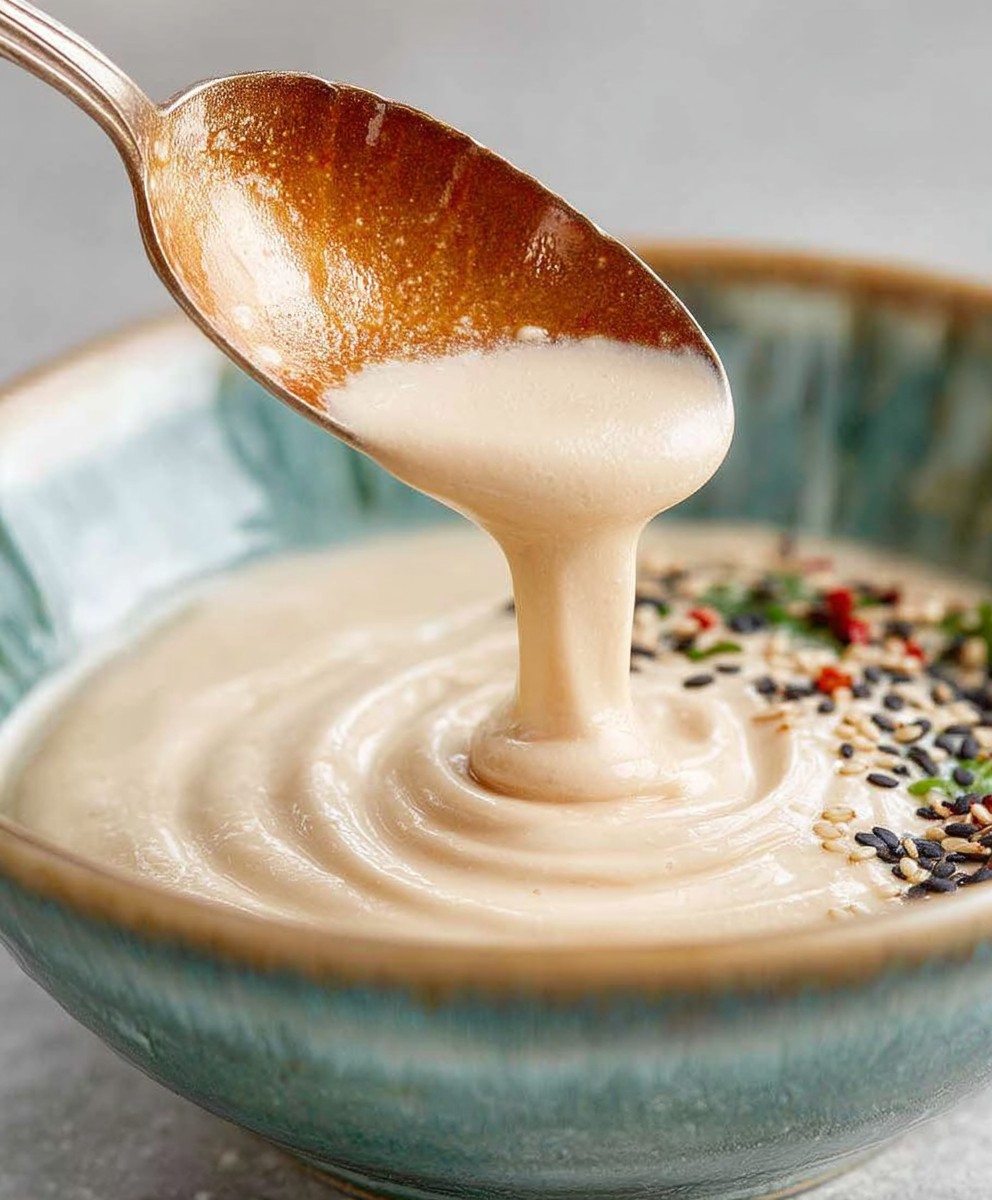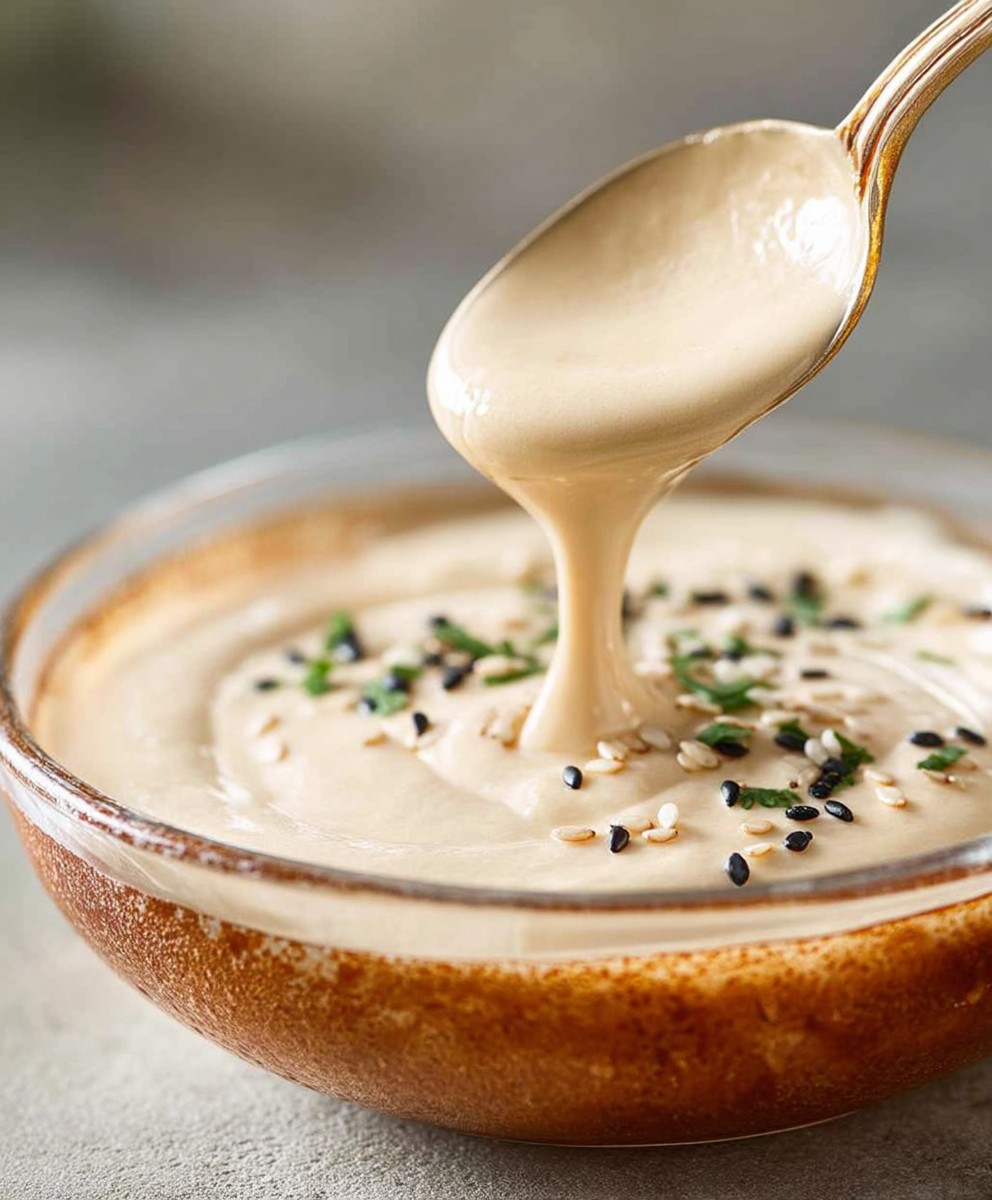Tahini sauce, that creamy, nutty elixir, is the secret weapon your kitchen has been missing! Forget bland salads and boring veggie platters; this versatile sauce transforms everything it touches into a culinary masterpiece. Have you ever wondered how restaurants achieve that irresistible, flavorful drizzle on their falafel or the perfect creamy base for their hummus? The answer, my friend, is almost always tahini sauce.
This simple yet profound sauce boasts a rich history, deeply rooted in Middle Eastern and Mediterranean cuisines. For centuries, tahini, made from ground sesame seeds, has been a staple ingredient, revered not only for its incredible flavor but also for its nutritional benefits. It’s a powerhouse of healthy fats, vitamins, and minerals, making it a guilt-free indulgence.
But what is it about tahini sauce that makes it so universally loved? It’s the perfect balance of earthy, nutty, and slightly bitter notes that dance on your palate. Its smooth, velvety texture adds a luxurious feel to any dish. Plus, it’s incredibly easy to make at home! Whether you’re a seasoned chef or a kitchen novice, you can whip up a batch of this liquid gold in minutes. So, are you ready to unlock the magic of tahini sauce? Let’s dive in!
Ingredients:
- 1 cup hulled sesame seeds
- 1/4 cup neutral-flavored oil (such as grapeseed, sunflower, or light olive oil)
- 1-2 tablespoons water (optional, for thinning)
- 1/4 teaspoon salt (or to taste)
Preparing the Sesame Seeds:
The key to amazing tahini is starting with the best sesame seeds and treating them right. We want to unlock their nutty flavor without burning them, so gentle toasting is essential.
- Toasting the Sesame Seeds: Pour the sesame seeds into a large, dry skillet. Place the skillet over medium-low heat. This is crucial low and slow is the way to go! We don’t want to rush this process.
- Constant Stirring is Key: Stir the sesame seeds constantly with a spatula or wooden spoon. This prevents them from burning and ensures even toasting. You’ll notice they start to release a wonderful aroma.
- Watch for Color Change: Continue toasting and stirring until the sesame seeds turn a light golden brown color. This usually takes about 5-7 minutes. Be very careful not to let them get too dark, as they will become bitter.
- Immediate Removal from Heat: Once the sesame seeds are toasted to a light golden brown, immediately remove the skillet from the heat and transfer the seeds to a plate or baking sheet to cool completely. Leaving them in the hot skillet will cause them to continue to cook and potentially burn.
- Cooling Completely: Allow the sesame seeds to cool completely before proceeding. This is important because warm sesame seeds can release their oils prematurely, which can affect the texture of the tahini.
Blending the Tahini:
Now comes the fun part transforming those toasted sesame seeds into creamy, dreamy tahini! A good food processor is your best friend here. Patience is also key; it takes a little time to get that perfectly smooth consistency.
- Initial Grind: Place the cooled, toasted sesame seeds into the bowl of your food processor. Process the seeds for several minutes, stopping occasionally to scrape down the sides of the bowl with a spatula. At first, the seeds will turn into a coarse powder. Don’t worry, this is normal!
- Adding the Oil: With the food processor running, slowly drizzle in the oil. Continue processing until the mixture starts to form a thick paste. Again, scrape down the sides of the bowl as needed.
- Patience is a Virtue: Keep processing! This is where patience comes in. It can take several minutes (5-10 minutes or even longer, depending on your food processor) for the tahini to become truly smooth and creamy. You might think it’s not going to happen, but trust the process!
- Checking the Consistency: Stop the food processor and check the consistency of the tahini. It should be smooth, creamy, and easily spreadable. If it’s still too thick or grainy, continue processing for a few more minutes.
- Adjusting with Water (Optional): If you prefer a thinner tahini, add water one tablespoon at a time, processing after each addition, until you reach your desired consistency. Be careful not to add too much water, as it can make the tahini too runny.
- Adding Salt: Add the salt and process for a few seconds to combine. Taste and adjust the seasoning as needed. You might want to add a little more salt, depending on your preference.
- Final Processing: Give the tahini one last whirl in the food processor to ensure everything is well combined and the texture is perfect.
Storing Your Homemade Tahini:
Proper storage is essential to keep your homemade tahini fresh and delicious for as long as possible.
- Transfer to an Airtight Container: Transfer the tahini to an airtight container, such as a glass jar or plastic container.
- Storage Location: Store the tahini in a cool, dark place, such as your pantry or cupboard.
- Refrigeration (Optional): While not necessary, refrigerating the tahini can help to extend its shelf life. However, keep in mind that refrigeration can cause the tahini to thicken. If this happens, simply let it sit at room temperature for a while before using, or stir in a little water to thin it out.
- Shelf Life: Homemade tahini will typically last for about 1-2 months when stored properly. Be sure to check for any signs of spoilage, such as a rancid smell or taste, before using.
Tips and Tricks for Perfect Tahini:
Here are a few extra tips and tricks to help you make the best tahini possible:
- Use High-Quality Sesame Seeds: The quality of your sesame seeds will directly impact the flavor of your tahini. Look for hulled sesame seeds that are fresh and have a pleasant aroma.
- Don’t Over-Toast the Seeds: Over-toasting the sesame seeds will result in a bitter tahini. Keep a close eye on them while toasting and remove them from the heat as soon as they turn a light golden brown.
- Use a Good Food Processor: A powerful food processor is essential for achieving a smooth and creamy tahini. If your food processor is not very powerful, you may need to process the tahini for a longer period of time.
- Scrape Down the Sides: Be sure to scrape down the sides of the food processor bowl frequently to ensure that all of the sesame seeds are being processed evenly.
- Adjust the Consistency to Your Liking: You can adjust the consistency of your tahini by adding more or less oil or water. If you prefer a thicker tahini, use less oil or water. If you prefer a thinner tahini, use more oil or water.
- Experiment with Flavors: Once you’ve mastered the basic tahini recipe, feel free to experiment with different flavors. You can add spices such as cumin, coriander, or paprika, or herbs such as parsley or cilantro. You can also add a touch of sweetness with honey or maple syrup.
- Troubleshooting: If your tahini is too thick, add a little more oil or water. If it’s too thin, add a little more sesame seeds. If it’s bitter, you may have over-toasted the sesame seeds. Unfortunately, there’s not much you can do to fix bitter tahini, so it’s best to start over with a fresh batch of sesame seeds.
Serving Suggestions:
Tahini is incredibly versatile and can be used in a wide variety of dishes. Here are just a few ideas:
- Dips: Tahini is a key ingredient in hummus, baba ghanoush, and other Middle Eastern dips.
- Sauces: Tahini can be used to make creamy sauces for salads, vegetables, and meats.
- Dressings: Tahini adds a nutty flavor and creamy texture to salad dressings.
- Spreads: Tahini can be spread on toast, crackers, or sandwiches.
- Baking: Tahini can be used in baking recipes, such as cookies, cakes, and muffins.
- Smoothies: Add a spoonful of tahini to your smoothies for a boost of healthy fats and protein.
- As a condiment: Drizzle tahini over roasted vegetables, grilled meats, or falafel.
Health Benefits of Tahini:
Besides being delicious, tahini is also packed with nutrients and offers several health benefits:
- Rich in Nutrients: Tahini is a good source of calcium, iron, magnesium, phosphorus, potassium, and zinc.
- High in Healthy Fats: Tahini is rich in monounsaturated and polyunsaturated fats, which are beneficial for heart health.
- Good Source of Protein: Tahini contains a decent amount of protein, making it a good addition to vegetarian and vegan diets.
- Antioxidant Properties: Sesame seeds contain antioxidants that can help protect your cells from damage.
- May Help Lower Cholesterol: Some studies suggest that sesame seeds may help lower cholesterol levels.
- May Improve Bone Health: The calcium and other minerals in tahini can contribute to strong and healthy bones.
Enjoy your homemade tahini!

Conclusion:
This isn’t just another sauce recipe; it’s a gateway to a world of flavor! I truly believe this tahini sauce recipe is a must-try for anyone looking to elevate their meals with a creamy, nutty, and incredibly versatile condiment. Its simplicity belies its profound impact on everything it touches. From drizzling over roasted vegetables to using it as a base for salad dressings, this sauce is a game-changer.
But why is it so special? It’s the perfect balance of flavors the rich, earthy tahini, the bright lemon juice, the subtle garlic, and the touch of sweetness from the maple syrup (or honey, if you prefer!). Its a symphony in your mouth, and its incredibly easy to customize to your own taste.
Serving Suggestions and Variations:
The possibilities are truly endless! Here are just a few ideas to get you started:
* Drizzle it over falafel or shawarma: This is a classic pairing for a reason! The creamy sauce perfectly complements the savory flavors of the falafel and shawarma.
* Use it as a dip for vegetables: Forget boring ranch dressing! This tahini sauce is a healthy and delicious alternative for dipping carrots, celery, cucumbers, and bell peppers.
* Spread it on sandwiches and wraps: Add a layer of flavor and moisture to your favorite sandwiches and wraps. Its especially delicious with grilled chicken or vegetables.
* Thin it out with water and use it as a salad dressing: Create a light and flavorful salad dressing by thinning the sauce with a little water and adding a pinch of salt and pepper.
* Mix it with hummus for an extra creamy dip: Take your hummus to the next level by stirring in a spoonful or two of this tahini sauce.
* Spice it up with a pinch of cayenne pepper or chili flakes: Add a little heat to your sauce for an extra kick.
* Add fresh herbs like parsley or cilantro: Fresh herbs will add a bright and vibrant flavor to your sauce.
* Experiment with different citrus juices: Try using lime juice instead of lemon juice for a slightly different flavor profile.
* Make it vegan by using maple syrup or agave nectar: This recipe is naturally vegan, but be sure to use a vegan sweetener if you’re following a strict vegan diet.
* Use it as a marinade for chicken or tofu: The tahini sauce will tenderize the meat and add a delicious nutty flavor.
I encourage you to get creative and experiment with different variations to find your perfect tahini sauce recipe. Don’t be afraid to adjust the ingredients to suit your own taste preferences. If you like a tangier sauce, add more lemon juice. If you prefer a sweeter sauce, add more maple syrup or honey.
Im confident that once you try this recipe, it will become a staple in your kitchen. It’s quick, easy, and incredibly versatile. It’s the perfect way to add flavor and nutrition to your meals.
So, what are you waiting for? Go ahead and give this recipe a try! I promise you won’t be disappointed. And more importantly, I’d love to hear about your experience. Did you try any variations? What did you serve it with? Share your thoughts and photos in the comments below! Let’s inspire each other to create delicious and healthy meals. I can’t wait to see what you come up with! Happy cooking!
Tahini Sauce: The Ultimate Guide to Making and Using It
Make creamy, delicious tahini at home with just a few ingredients! This easy recipe unlocks the nutty flavor of sesame seeds for a versatile ingredient perfect for dips, sauces, and more.
Ingredients
- 1 cup hulled sesame seeds
- 1/4 cup neutral-flavored oil (such as grapeseed, sunflower, or light olive oil)
- 1-2 tablespoons water (optional, for thinning)
- 1/4 teaspoon salt (or to taste)
Instructions
- Toast the Sesame Seeds: Pour the sesame seeds into a large, dry skillet. Place the skillet over medium-low heat.
- Stir Constantly: Stir the sesame seeds constantly with a spatula or wooden spoon until they turn a light golden brown color (about 5-7 minutes). Be careful not to burn them.
- Remove from Heat: Immediately remove the skillet from the heat and transfer the seeds to a plate or baking sheet to cool completely.
- Initial Grind: Place the cooled, toasted sesame seeds into the bowl of your food processor. Process for several minutes, stopping to scrape down the sides, until a coarse powder forms.
- Add Oil: With the food processor running, slowly drizzle in the oil. Continue processing until the mixture starts to form a thick paste, scraping down the sides as needed.
- Process Until Smooth: Keep processing for 5-10 minutes (or longer, depending on your food processor) until the tahini becomes smooth and creamy.
- Adjust with Water (Optional): If you prefer a thinner tahini, add water one tablespoon at a time, processing after each addition, until you reach your desired consistency.
- Add Salt: Add the salt and process for a few seconds to combine. Taste and adjust the seasoning as needed.
- Final Processing: Give the tahini one last whirl in the food processor to ensure everything is well combined.
- Store: Transfer the tahini to an airtight container and store in a cool, dark place. Refrigeration is optional but can extend shelf life.
Notes
- Use high-quality, hulled sesame seeds for the best flavor.
- Don’t over-toast the seeds, as they will become bitter.
- A good food processor is essential for achieving a smooth consistency.
- Scrape down the sides of the food processor bowl frequently.
- Adjust the consistency with oil or water to your liking.
- Experiment with flavors by adding spices or herbs.
- If the tahini is too thick, add more oil or water. If it’s too thin, add more sesame seeds.

